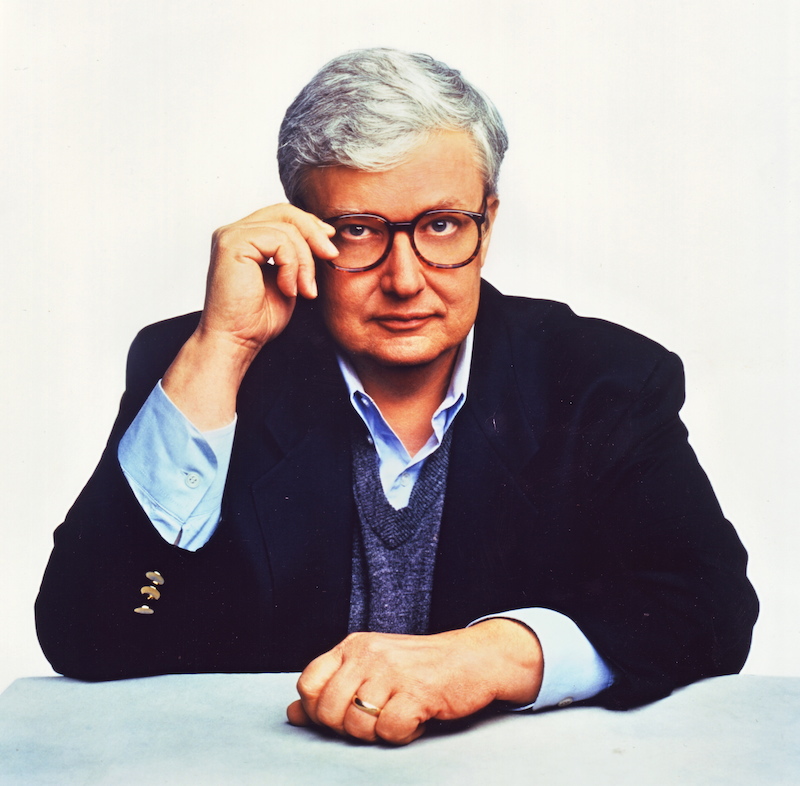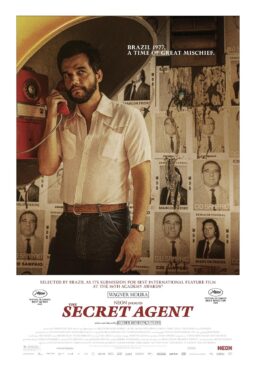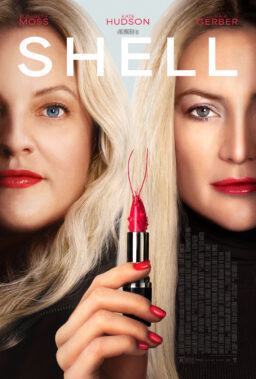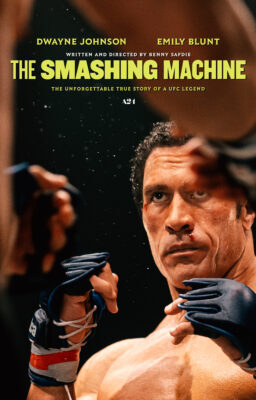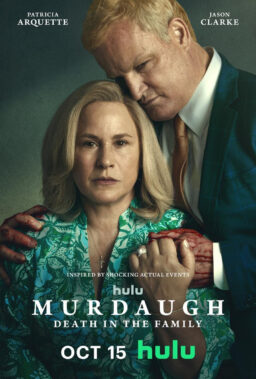This is absolutely one of my favorite articles Roger ever wrote about the movies, originally published in 1992.—Chaz Ebert
For many years I remembered the name of the first film I ever reviewed, but now I find it has left my mind. It was a French film, I remember that much. I watched it from a center seat in the old World Playhouse, bursting with the awareness that I was reviewing it, and then I went back to the office and wrote that it was one more last gasp of the French New Wave, rolling ashore.
I was more jaded then than I am now. At the time I thought that five years would be enough time to spend on the movie beat. My master plan was to become an op-ed columnist and then eventually, of course, a great and respected novelist. My reveries ended with a deep old wingback chair pulled up close to the fire in a cottage in the middle of the woods, where the big dog snored while I sank into a volume of Dickens.
I now find that I have been a film critic for 25 years. I am not on the op-ed page, have not written the novel, do not own the dog, but do have the cottage and a complete set of Dickens. And I am still going to the movies for a living. My mother never knew how to handle that, when her friends asked her, “And what about Roger? Is he still just…going to the movies?” It didn’t seem like a real job.
There is something not natural about just…going to the movies. Man has rehearsed for hundreds of thousands of years to learn a certain sense of time. He gets up in the morning and the hours wheel in their ancient order across the sky until it grows dark again and he goes to sleep. A movie critic gets up in the morning and in two hours it is dark again, and the passage of time is fractured by editing and dissolves and flashbacks and jump cuts. Sometimes I see two or three movies a day, mostly in the screening room upstairs over the White Hen Pantry. I slip downstairs at noon for a sandwich, blinded by the sunlight, my mind still filled with chases and gun duels, yuks and big boobs, cute dogs and brainy kids, songs and dances, amazing coincidences and chance meetings and deep insights into the nature of man. Whatever was in the movies.
“Get a life,” they say. Sometimes I feel as if I have gotten everybody else’s. I have a colleague who describes his job as “covering the national dream beat,” because if you pay attention to the movies they will tell you what people desire and fear in their deepest secrets. At least, the good ones will. That’s why we go, hoping to be touched in those secret places. Movies are hardly ever about what they seem to be about. Look at a movie that a lot of people love, and you will find something profound, no matter how silly the film may seem. The real subjects of “Wayne's World” are innocence and friendship. That’s what you get for your seven dollars.
In the past 25 years I have probably seen 10,000 movies and reviewed 6,000 of them. I have forgotten most of those films, I hope, but I remember those worth remembering, and they are all on the same shelf in my mind. There is no such thing as an old film. “La Dolce Vita” is as new for me as “Basic Instinct.” There is a sense in which old movies are cut free from Time. Paul Henreid and Curt Bois have died recently, and that means all of the major characters onscreen in “Casablanca” are dead, and the movie floats free of individual lifetimes. It no longer has any reference to real people we might meet at a gas station or the Academy Awards. It is finally all fiction. “Basic Instinct,” on the other hand, involves careers that are still developing, people who are standing behind the screen, so to speak, peeking at the audience from the wings.
I look at silent movies sometimes, and do not feel I am looking at old films, I feel I am looking at a Now that has been captured. Time in a bottle. When I first looked at silent films, the performers seemed quaint and dated. Now they seem more contemporary than the people in 1980s films. The main thing wrong with a movie that is ten years old is that it isn’t 30 years old. After the hair styles and the costumes stop being dated and start being history, we can tell if the movie itself is timeless.
What kinds of movies do I like the best? If I had to make a generalization, I would say that many of my favorite movies are about Good People. It doesn’t matter if the ending is happy or sad. It doesn’t matter if the characters win or lose. The only true ending is death. Any other movie ending is arbitrary. If a movie ends with a kiss, we’re supposed to be happy. But then if a piano falls on the kissing couple, or a taxi mows them down, we’re supposed to be sad. What difference does it make? The best movies aren’t about what happens to the characters. They’re about the example that they set.
“Casablanca” is about people who do the right thing. “The Third Man” is about two people who do the right thing and can never speak to one another as a result. The secret of “Silence of the Lambs” is buried so deeply that you may have to give this a lot of thought, but its secret is that Hannibal Lecter is a Good Person. He is the helpless victim of his unspeakable depravities, yes, but to the limited degree that he can act independently of them, he tries to do the right thing.
Not all good movies are about Good People. I also like movies about bad people who have a sense of humor. Orson Welles, who does not play either of the good people in “The Third Man,” has such a winning way, such witty dialog, that for a scene or two we almost forgive him his crimes. Henry Hill, the hero of “GoodFellas,” is not a good fella, but he has the ability to be honest with us about why he enjoyed being bad. He is not a hypocrite. The heroine of “The Marriage of Maria Braun” does some terrible things, but because we know some of the forces that shaped her, we understand them, and can at least admire her resourcefulness.
Of the other movies I love, some are simply about the joy of physical movement. When Gene Kelly splashes through “Singin' in the Rain,” when Judy Garland follows the yellow brick road, when Fred Astaire dances on the ceiling, when John Wayne puts the reins in his teeth and gallops across the mountain meadow, there is a purity and joy that cannot be resisted. In “Equinox Flower,” a Japanese film by the old master Yasujiro Ozu, there is this sequence of shots: A room with a red teapot in the foreground. Another view of the room. The mother folding clothes. A shot down a corridor with a mother crossing it at an angle, and then a daughter crossing at the back. A reverse shot in a hallway as the arriving father is greeted by the mother and daughter. A shot as the father leaves the frame, then the mother, then the daughter. A shot as the mother and father enter the room, as in the background the daughter picks up the red pot and leaves the frame. This sequence of timed movement and cutting is as perfect as any music ever written, any dance, any poem.
I also enjoy being frightened in the movies, but I am bored by the most common way the movies frighten us, which is by having someone jump unexpectedly into the frame. The trick is so old a director has to be shameless to use it. Alfred Hitchcock said that if a bunch of guys were playing cards and there was a bomb under the table and it exploded, that was terror, but he’d rather do a scene where there was a bomb under the table and we kept waiting for it to explode but it didn’t. That was suspense. It’s the kind of suspense I enjoy.
Love? Romance? I’m not so sure. I don’t much care for movies that get all serious about their love affairs, because I think the actors tend to take it too seriously, and end up silly. I like it better when love simply makes the characters very, very happy, as when Doris Day first falls for Frank Sinatra in “Young at Heart,” or when Lili Taylor thinks River Phoenix really likes her in “Dogfight.”
Most of the greatest directors in the history of the movies were already well known when I started as a critic in 1967. There was once a time when young people made it their business to catch up on the best works by the best directors, but the death of film societies and repertory theaters has put an end to that, and for today’s younger filmgoers, these are not well-known names: Bunuel, Fellini, Bergman, Ford, Kurosawa, Ray, Renoir, Lean, Bresson, Wilder, Welles. Most people still know who Hitchcock was, I guess.
Of the directors who started making films since I came on the job, the best is Martin Scorsese. His camera is active, not passive. It doesn’t regard events, it participates in them. There is a sequence in “GoodFellas” that follows Henry Hill’s last day of freedom, before the cops swoop down. Scorsese uses an accelerating pacing and a paranoid camera that keeps looking around, and makes us feel what Hill feels. It is easy enough to make an audience feel basic emotions (“Play them like a piano,” Hitchcock advised), but hard to make them share a state of mind. Scorsese can do it.
Which of today’s actors will become immortals? Not very many. Nicholson and De Niro, and not many women, because Hollywood no longer has a lifetime of roles for them. Compared to the great movie stars of the past, modern actors are handicapped by the fact that their films are shot in color. In the long run, that will rob most of them of the immortality that was obtained even by second-tier stars of the black-and-white era. Peter Lorre and Sydney Greenstreet are, and will remain, more memorable than most of today’s superstars with their multimillion-dollar paychecks.
Color is too realistic. It is too distracting. It projects superfluous emotional cues. It reduces actors to inhabitants of the mere world. Black-and-white (or, more accurately, silver-and-white) creates a mysterious dream state, a simpler world of form and gesture.
Most people do not agree with me. They like color and think a black-and-white film is missing something. Try this. If you have wedding photographs of your parents and grandparents, chances are your parents are in color and your grandparents are in black and white. Put the two photographs side by side and consider them honestly. Your grandparents look timeless. Your parents look goofy.
The next time you buy film for your camera, buy a roll of black-and-white. Go outside at dusk, when the daylight is diffused. Stand on the side of the house away from the sunset. Shoot some natural-light closeups of a friend. Have the pictures printed big, at least 5 x 7. Ask yourself if this friend, who has always looked ordinary in every color photograph you’ve ever taken, does not suddenly, in black and white, somehow take on an aura of mystery. The same thing happens in the movies.
On the other hand, I am not one of those purists who believes the silents were perfect, and sound ruined everything. To believe that, I would have to be willing to do without Marilyn Monroe singing “Diamonds are a Girl’s Best Friend.” Groucho Marx saying, “This bill is outrageous! I wouldn’t pay it if I were you!” Robert De Niro asking, “Are you talkin’ to me?” Sound is essential, but dialog is not always so. The big difference between today’s dialog and the dialog of years ago is that the characters have grown stupid. They say what is needed to advance the plot, and get their laughs by their delivery of four-letter words. Hollywood dialog was once witty, intelligent, ironic, poetic, musical. Today it is flat. So flat that when a movie allows its characters to think fast and talk the same way, the result is invigorating, as in “My Dinner with Andre,” or the first 30 minutes of “White Men Can't Jump.”
Home video is both the best and the worst thing that has happened on the movie beat since I’ve been a critic. It is good because it allows us to see the movies we want to see, when we want to see them. It provides an economic incentive for the prints of old movies to be preserved and restored. It brings good movies, new and old, to towns without good movie theaters. I get letters from people who live miles from any good-sized town, but rent the new foreign films through the mail.
Home video is bad because it has destroyed the campus film societies, which were like little shrines to the cinema. If the film society was showing Kurosawa’s “Ikiru” for a dollar and there was nothing else playing except the new releases at first-run prices, you went to “Ikiru” and then it was forever inside of you, a great film. Today, students rent videos, usually not very good ones, and even if they watch a great movie, they do it alone or with a few friends. There is no sense of audience, and yet the single most important factor in learning to be literate about movies is to be part of an audience that is sophisticated about them.
I also hold it against home video that it has destroyed most of the repertory theaters. When I started as a film critic at the Sun-Times, there was a theater named the Clark, on the corner that is now an extension of the First National Bank. It showed a different double feature every day of the year, 22 hours a day. That’s where I saw “Sunset Boulevard” for the first time, and “All About Eve.” On the other hand, when I started in 1967, there weren’t many film festivals, and not many art museums that took film seriously. Today every medium-size city has a film festival, where if you are lucky you will see a wonderful film you have never heard of before. And a lot of museums have excellent film centers.
What I miss, though, is the wonder. Anyone my age can remember walking into a movie palace where the ceiling was far overhead, and balconies and mezzanines reached away into the shadows. We remember the sound of 2,000 people laughing all at once. And the screens the size of billboards, so high off the floor that every seat in the house was a good seat. Today you walk into a shoebox and peer around the head of the person in front of you, and in the quiet moments you can hear the sound effects from the movie next door, right through the wall. “I lost it at the movies,” Pauline Kael said, and we all knew just what she meant. Now we can’t even give it away.
But all is not lost. Scorsese is not the only great director to come along since 1967. There are Altman and Coppola, Herzog and Fassbinder, Tavernier and Stone, Lee and Jarmusch. I went to Cannes last year and there was a 23-year-old kid there named Singleton who had made a movie, and he came out of thin air, but his talent was real. Things are opening up a little. In recent years we’ve started getting important films from blacks, Hispanics, women, and other groups that essentially made no films at all, when I started reviewing.
When you go to the movies every day, it sometimes seems as if the movies are more mediocre than ever, more craven and cowardly, more skillfully manufactured to pander to the lowest tastes, instead of educating them. Then you see something absolutely miraculous. Something like “Wings of Desire,” or “Do the Right Thing,” or “Drugstore Cowboy,” or “Gates of Heaven,” or “Beauty and the Beast,” or “Life Is Sweet,” and on your way home through the White Hen Pantry you look distracted, as if you had just experienced some kind of a vision.

